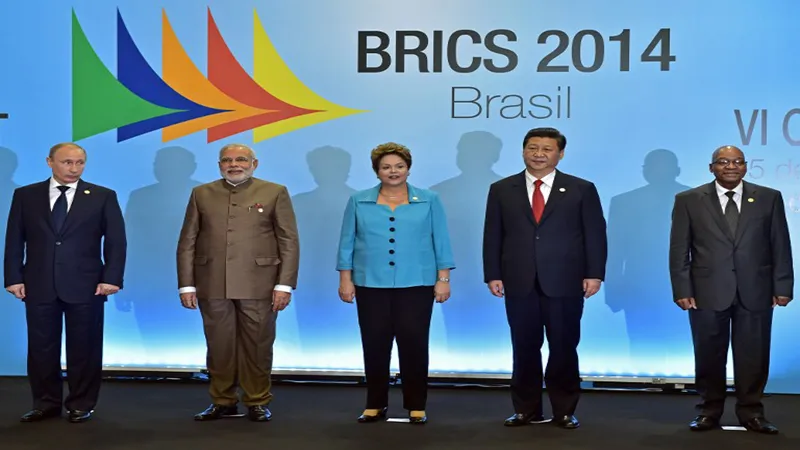The concept of BRICS and the groupings' ambitious efforts have come under criticism from both the international community and a certain section of the Indian intelligentsia. However a deeper look reveals there is much to be optimistic about.
The initial response to the five nations-Brazil, Russia, India, China, South Africa-coming together can be best described as dismissive. Many a commentator argued that the five countries, which have little in common (and in fact have a range of disagreements), could not do what was achieved post the WW-II at Bretton Woods. Post the 2014 summit at Fortaleza however, such claims were conquered with the member nations successfully agreeing to the establishment of the New Development Bank (NDB).
After the announcement, the attack from the international community shifted from the incapability to organize, to the lack of capacity of the NDB to replace the World Bank or the IMF. It is here however that the pessimists miss the entire point. The New Development Bank (NDB) has two objectives.
The first is to complement the work of the Bretton Woods institutions. It accepts that such bodies play a large role in providing development assistance and the NDB would look to play a supportive role to them. According to an Overseas Development Institute report, governments and aid donors must bridge an annual gap of $73 billion to meet health, education and social security targets. The NDB thus looks to assist in bridging this shortfall.
The second is to provide emerging economies with more options for certain development projects. A major grumbling of the Global South has been the intrusive conditionalities that come attached with World Bank/IMF assistance. In this context, NDB emerges as an alternative source with member states understanding these grievances better having faced stringent conditionalities themselves.
Indian cynicism
The Indian naysayers too have two concerns. Firstly, it has been argued that at a time when the government is finding it hard to manage the fiscal deficit so much so that it is unable to fund development projects within its own geographical boundaries, it makes little sense to put aside $10 billion for the New Development Bank. What this line of argument misses is that by pooling in its resources with four other countries-particularly China, which has a higher credit rating-the NDB allows India to leverage these funds for larger loans at lower interest rates. As Christopher Wood at the South African Institute of International Affairs points out, ""Initial capital acts as seed funding for the Bank, which would then raise more substantial amounts in capital markets, to pay for its operations"".
The second argument has focussed on the importance of optics. It assumes that the location of the Bank, or the presidency of the Bank, matter significantly and direct the policy agenda of such institutions. Proponents of such theory then go onto argue that India has lost significant mileage by allowing the headquarters to be based in China and not getting permanent presidency in return. Such arguments have numerous flaws, not least the assumption they are based on. While symbolism matters, what drives the agenda at these institutions is voting rights enjoyed by members. The argument that Bretton Woods Institutions are dominated by the U.S. and certain European countries because of optics fails to consider that these two regions combined hold over 60% of voting rights at the World Bank and the IMF. The equal voting rights for BRICS nations in the NDB is a game-changer and discards any concern people might have regarding symbolisms and optics.
Common scepticism
A common critique of the international and Indian community has been that the NDB is another avenue for China to propagate the ""Beijing Consensus"" and the country which is to suffer most due to this is India. It is here that those bullish on the prospects of the NDB must concede some ground. Yes, the Chinese will look to use this institution for its own projects in Africa and Asia, and India must guard against this. Having said that, the onus is on India to not let the momentum shift towards the Chinese agenda. This can be done by taking a leaf out the Chinese initiative One Belt One Road and proposing our own development strategies.
Conclusion
The New Development Bank is in a lot ways revolutionary. It is the first time that a group of five emerging economies, with varying political systems and structures, and which are geographically spread wide apart from each other, have taken up the mantle of development in the Global South. By blending in the old with a lot of the new, in areas such as means of financing and institutional involvement, the New Development Bank promises exactly what its title suggests- a new way of development banking.
Courtesy: www.swarajyamag.com
The views expressed above belong to the author(s). ORF research and analyses now available on Telegram! Click here to access our curated content — blogs, longforms and interviews.




 PREV
PREV


